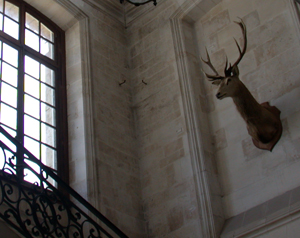 By Joe Vaillancourt
By Joe Vaillancourt
LANSING — A diseased deer found in Kent County last year has propelled the Department of Natural Resources (DNR) to make changes in sanitation and waste management rules for licensed taxidermists.
Chronic wasting disease (CWD) is an always-fatal ailment that physically and mentally weaken deer, said Mike Bailey of the department’s Wildlife Division. CWD isn’t known to adversely affect humans or other livestock such as cattle.
“The main reason for the taxidermy regulation changes is for CWD surveillance, protection and response,” Bailey said.
“We’ve only found one animal with CWD in Michigan,” he said. “CWD isn’t a living thing, so you can’t ‘kill’ it. We made changes to make sure the disease the disease stays out of Michigan.”
The state has 726 licensed taxidermists.
Bailey said the new bio-security regulations for licensed taxidermists requires them to dispose of waste in a proper landfill. They must also keep records of customers for a minimum of six years.
Customers and taxidermists must also wear protective equipment including gloves, boots and coveralls in facilities with both taxidermy and captive cervids — deer, moose and elk.
License fees rose from $50 to $100 and specimen tags went from 6 cents to 50 cents.
The DNR has established a nine-township surveillance zone in northeast Kent County where it’s illegal to remove any carcass from the area.
“If a hunter shoots a deer in the CWD surveillance zone, they are only able to remove a skullcap, finalized mount or de-boned meat from the area,” Bailey said. “They cannot bring a carcass out. It’s illegal to possess a surveillance-caught carcass outside of the zone until it is tested.”
The DNR has designated sample sites around the state for deer that will be tested at a Michigan State University lab.
According to the DNR, Colorado, Nebraska, Minnesota, South Dakota, Montana, Kansas, New York, Wisconsin and Oklahoma contain CWD areas. Saskatchewan and Alberta, Canada, do also.
Scott Derenski of Six Lakes, president of the Michigan Taxidermist Association, said his organization supports the new rules, adding the prevention measures are worth the costs.
“We had a board member work directly with the DNR. Our feelings were put forth,” he said.
“From the association’s point of view, we realize we’re going to have to buckle down on CWD. We actively support the DNR and what they are doing,” Derenski said.
In 2008, the DNR tested 8,650 white tail deer in the state. Only the Kent County specimen tested positive for CWD.
“There has never been any known cases of CWD in humans,” he said. “But if I had the choice of eating an infected animal or a clean one, I’d definitely eat the clean one.”
Teresa Bartoni, of Bartoni’s Sportsman Taxidermy in Lake Orion, said taxidermy is only one arena for fighting CWD, and more can be done.
“Deer and roadkill laying on the side of the road are a much bigger deal. It’s not just taxidermists’ responsibility,” she said.
“At our point, the animal is dead. There is nothing we can do except disposing of the carcass and bone,” she said.
More information on CWD and the new regulations can be found at www.michigan.gov/chronicwastingdisease.